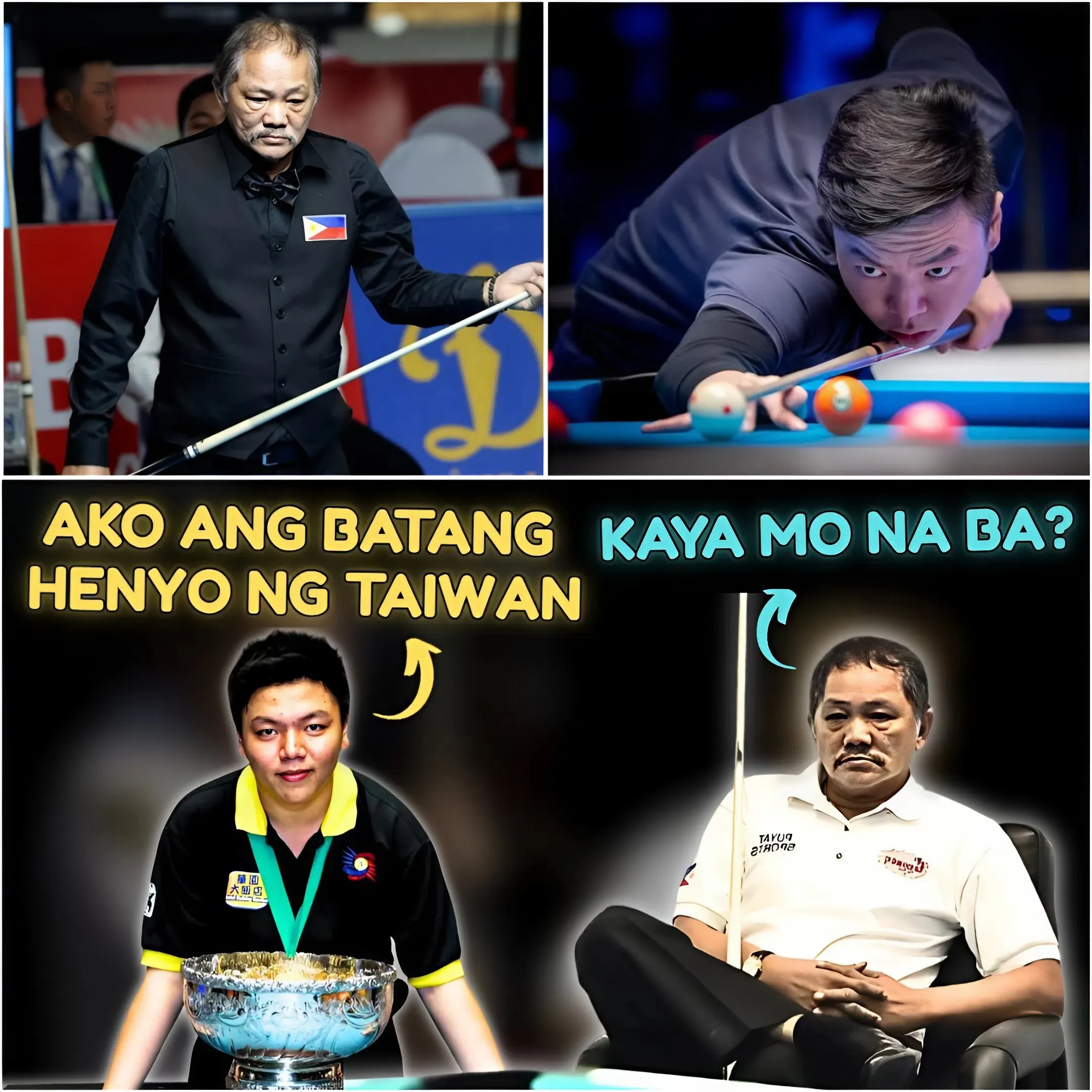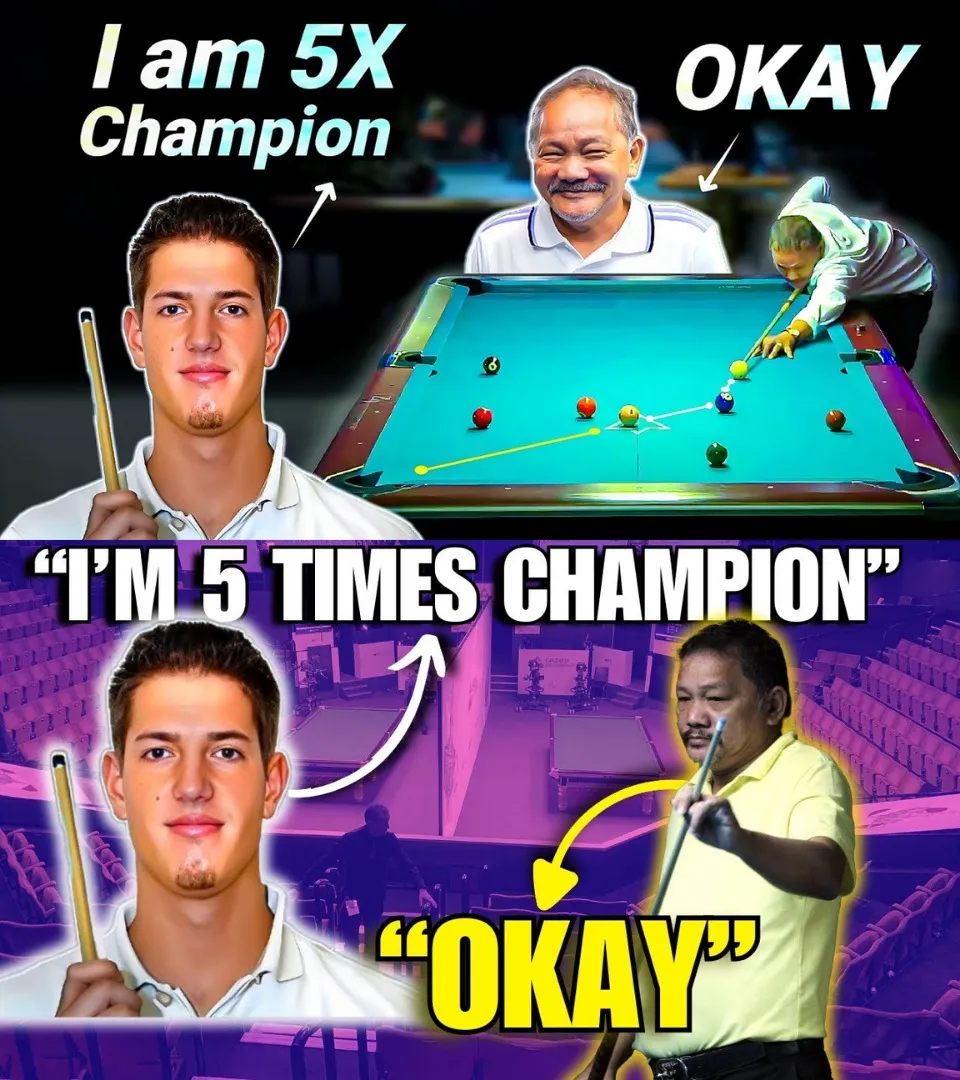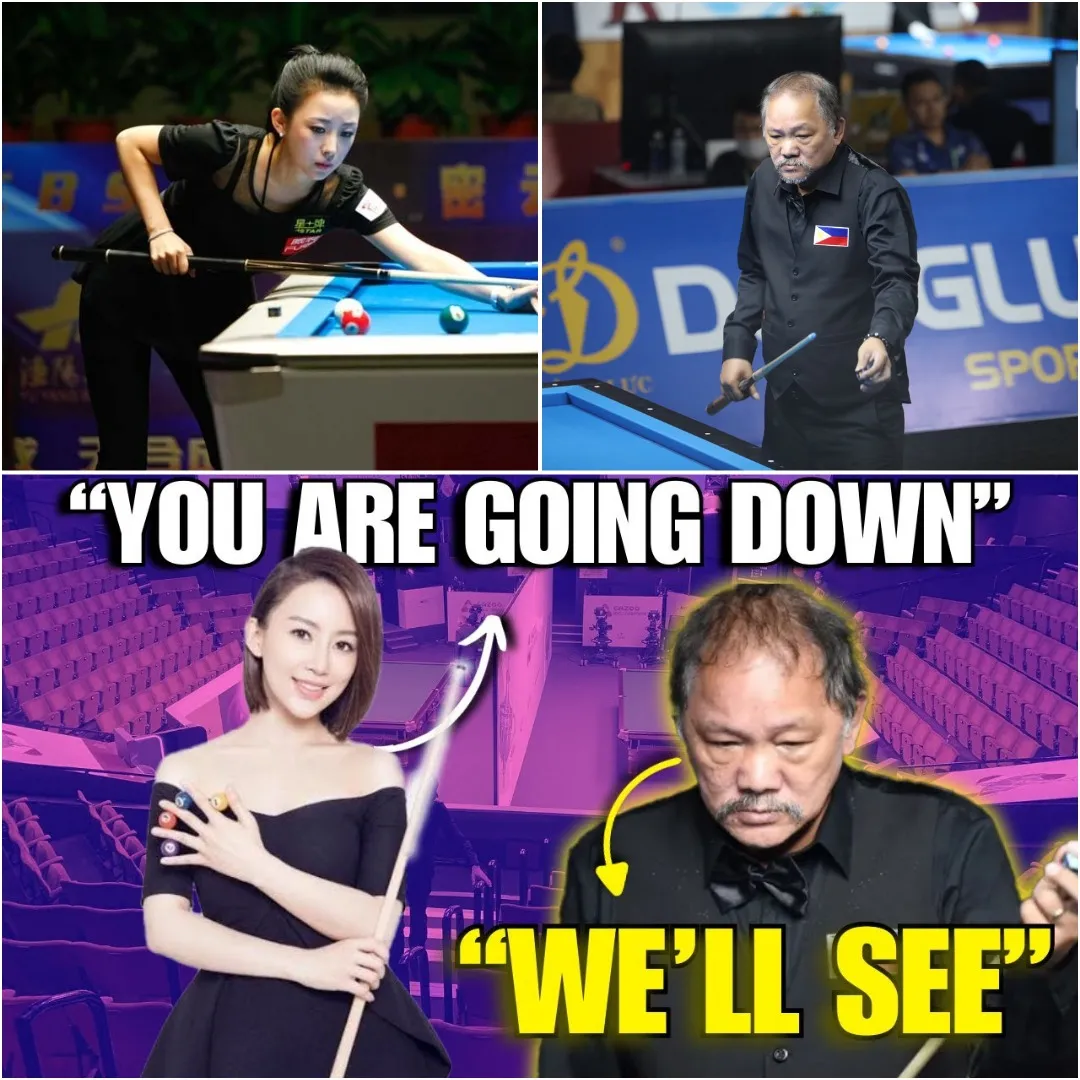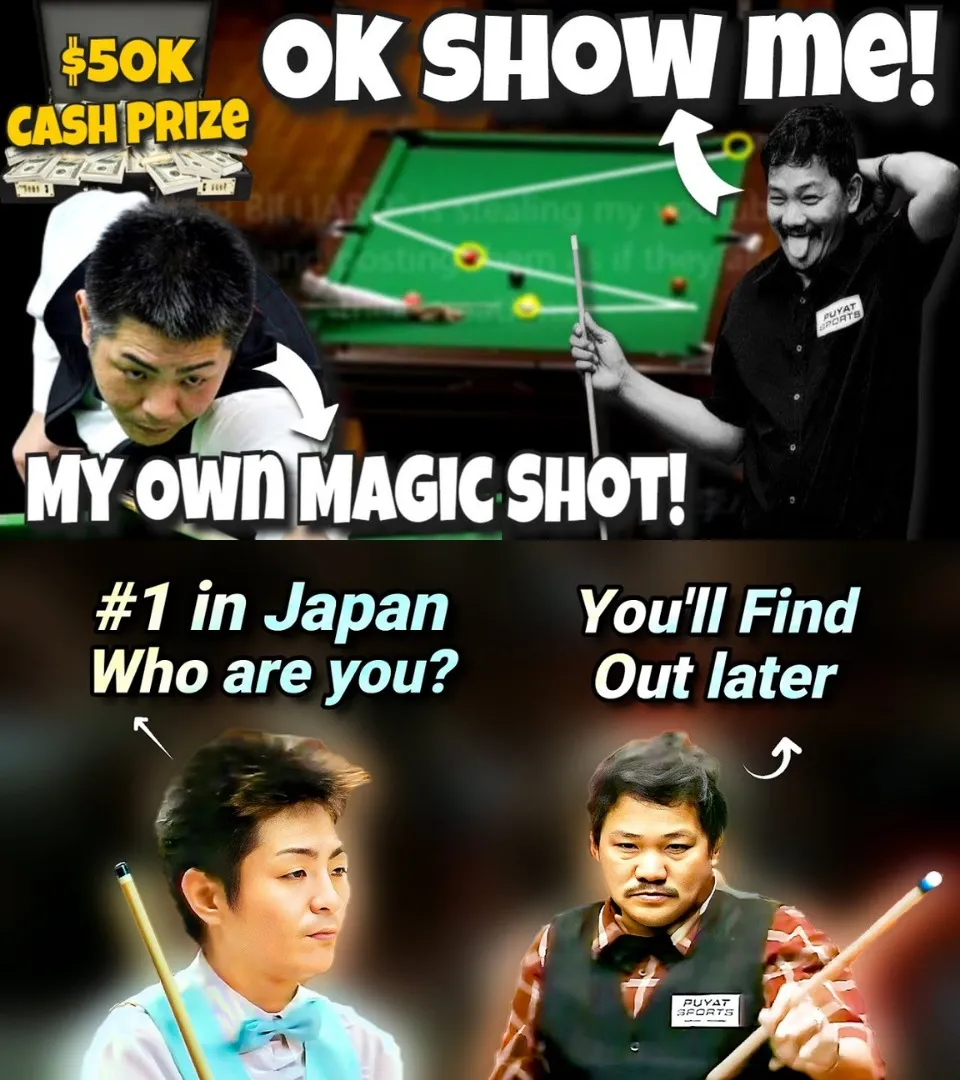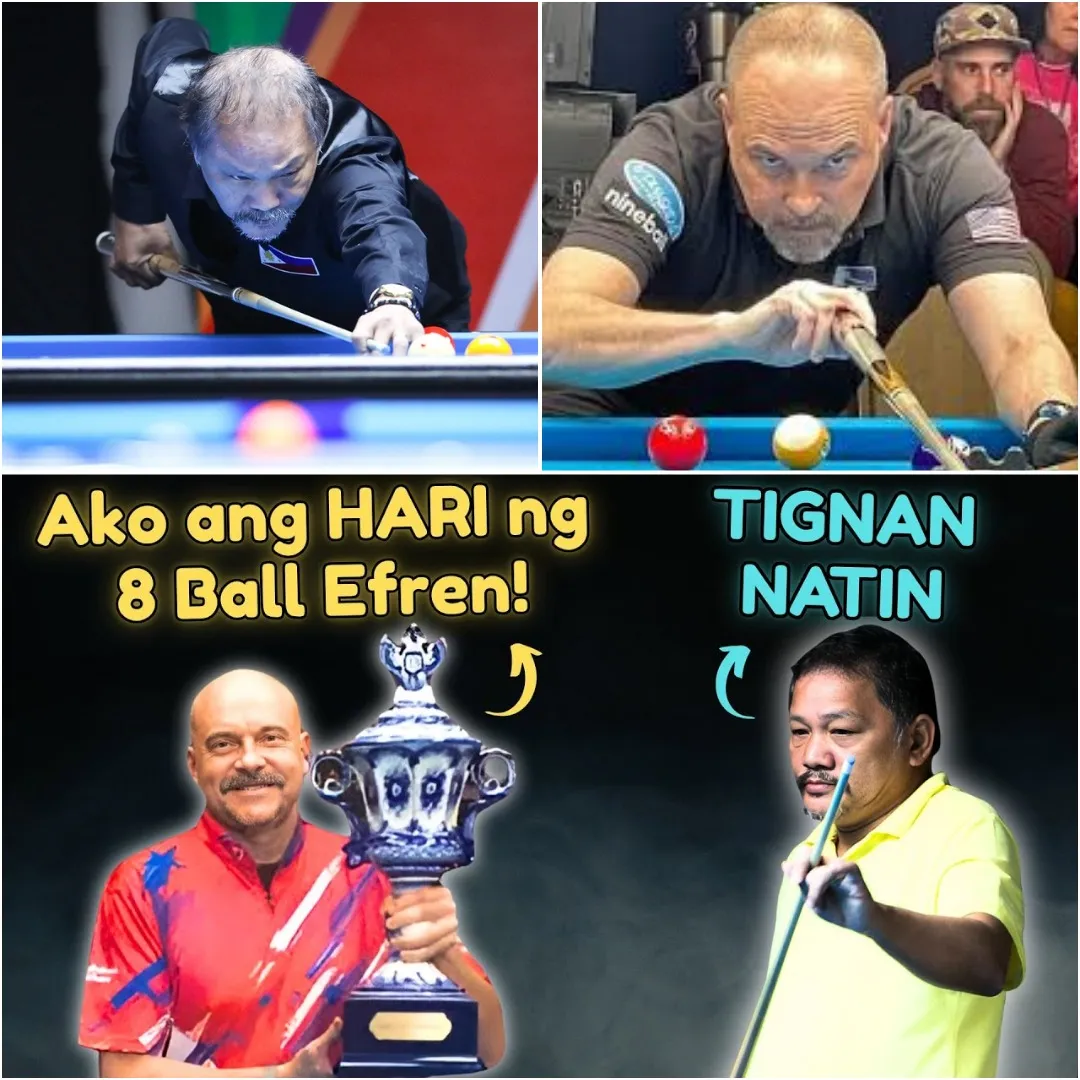The world of billiards is no stranger to drama, but few matches have stirred global anticipation like this. The tables are polished, the cameras are rolling, and the world is watching as two generations collide in what is already being hailed as “The Final of the Century.” On one side stands a 17-year-old prodigy—the youngest world champion in billiards history—whose rise has sent shockwaves through the cue sports community. On the other side? The living legend, the magician himself, Efren “Bata” Reyes, who returns to his homeland, the Philippines, for one more shot at glory.
The announcement came like thunder. News broke that after the teen superstar’s historic win at the World 9-Ball Championship, he issued a respectful yet daring challenge to Reyes: “I grew up watching the magician. Now I want to face him.” The internet exploded. Within hours, the Philippine Billiards Association confirmed it—Efren Reyes had accepted the challenge.
This wasn’t just a match. This was a moment. A bridge between eras. A clash of philosophy, experience, and style.
The Teen Phenom Who Took Over the World
Very few athletes become legends before they can vote, but the 17-year-old champion—whose name has become synonymous with fearless play—earned every bit of his fame. With deadly accuracy, masterful safety plays, and nerves of steel, he swept through the world tournament, defeating seasoned veterans with a maturity far beyond his years.
VIDEO :
Analysts called him “a once-in-a-generation talent.” Fans called him “the new face of pool.” And then, after hoisting the trophy, he made headlines again—not for what he won, but for who he wanted next.
“I want to face Efren Reyes,” he said, voice steady. “I know he’s a legend. I want to test myself against him—on his turf.”
The Magician Returns Home
At 68, Efren Reyes has done it all. World titles, undefeated streaks, trick shots that defy science, and a legacy that stretches across continents. Many thought he was done with high-pressure showdowns. But when the invitation came, and when the name of the challenger reached his ears, the magician smiled and said:
“Let’s play. Let the kid see what real pressure feels like.”
Reyes’ return to the Philippine competitive scene has become a national event. Billboards lit up across Manila. News stations aired retrospectives of his greatest matches. Streets buzzed with pride. To Filipinos, this is more than just a match—this is a homecoming of a hero, a reminder of greatness that once put the nation on the global billiards map.
And fittingly, the venue chosen was none other than the Araneta Coliseum, the same place Reyes played some of his most iconic matches decades earlier.
The Match Setup: Clash of Generations
Everything about this final is poetic. On one side, the young star with lightning reflexes and a modern, aggressive style. On the other, the calm and unpredictable master whose creativity has baffled the best. Technology vs. tradition. Youth vs. wisdom. Power vs. precision.
Match format: Race to 21 racks, winner-breaks, standard 9-ball rules.
But make no mistake—no rulebook can contain the drama expected here.
The Day Arrives: History in the Making
The arena is packed to the rafters. Thousands in attendance, millions watching live broadcasts and streams. Social media trends explode with hashtags: #ReyesVsProdigy, #FinalOfTheCentury, #TheMagicianReturns.
The players enter.
The teen walks in with swagger, confidence in every step, cue in hand like a sword ready for battle.
Then Reyes appears—calm, smiling, humble as always—but with eyes that have seen wars on green felt and conquered them all.
The referee calls for the lag. The crowd hushes. And the match begins.
The Magic Rekindled
From the very first rack, it's clear: this will not be easy for either player.
The teen breaks, runs out with textbook perfection. 1–0.
Reyes replies—not with force, but with flair. A slow roll safety that traps the cue ball behind three object balls. The audience gasps. Commentators whisper, “That’s classic Efren.”
Each rack feels like a battle of wills. The teen unleashes shot-making firepower. Reyes counters with finesse and geometry. He pulls out banks and kicks that make people question the laws of physics. In one unforgettable moment, Reyes escapes a near-impossible snooker, sending the cue ball three rails and pocketing the 4-ball clean—the crowd erupts.
At rack 10, the score is tied. No one expected it to be this close. The teen’s fire meets Reyes’ patience shot-for-shot. And perhaps the most beautiful sight is not the balls dropping—but the smiles exchanged between players. Mutual respect. Mutual admiration. Warrior to warrior.
The Turning Point
Rack 15. Reyes trails 7–8. The teen breaks, but the balls scatter awkwardly. Reyes steps up. What follows is pure art. He plays a six-shot run-out that includes a double-kiss carom, a jump kick shot, and a bank that stuns everyone into silence.
He takes the lead—and never looks back.
Rack after rack, the crowd witnesses not a comeback, but a reminder: that greatness may age, but it never fades.
Final Score: 21–17
Reyes takes the win. The coliseum erupts. Fans chant his name. The teen claps, walks over, and embraces him.
“Thank you for the lesson,” he says.
Reyes smiles: “You’ll be great. Just remember to enjoy the game.”
Legacy Cemented, Future Born
This final didn’t just crown a winner—it passed a torch. Efren Reyes reminded the world why he’s the greatest. But he also gave space for the next generation to shine.
And for millions watching, one truth became clear: legends don’t just win—they inspire.
